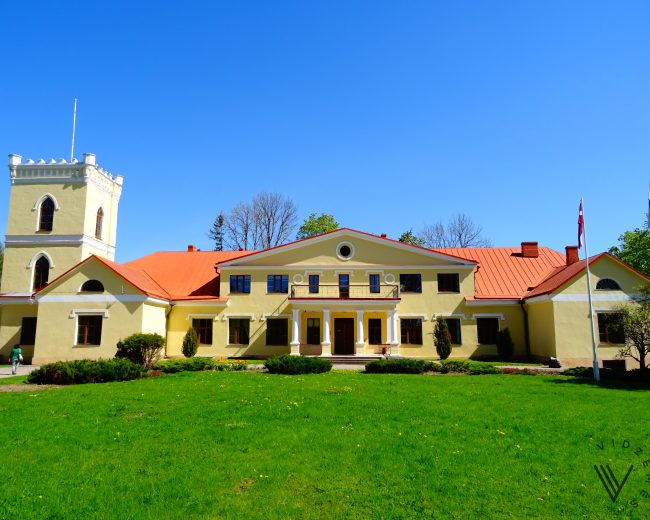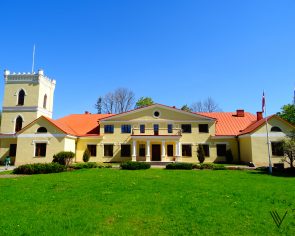Dzerbene manor house
An ancient and well-preserved castle, which, upon prior request, can also wake up as a place where ghost stories, knights and ancient warriors await guests and allow you to put yourself in their shoes. A souvenir shop is also available, which is run by the creative team of “Zemenītes sniegā”.
Active recreation
For events
For families
For groups (11+)
History and culture
Landscape and nature
People and location
Urban environment
The castle is surrounded by a wide, lush and ancient park with a cascade of seven ponds.
After prior registration in the castle, you can try your hand at archery, javelin throwing or stilt walking, as well as testing your strength in a battle run in full armor and in various medieval themed obstacle courses.
The castle is inhabited by the organizers of historical adventure events "Araisis", led by Uldis Paseks. Activities in medieval motifs take place regularly. You can order various disciplines, narratives and trials in the castle and elsewhere. Read more about Uldis in the "Human Stories" section.
The place is suitable for visitors of different ages and is also attractive to younger generations. There is an offer for medieval activities for school students. A tour of the castle with or without ghost stories and a visit to the haunted chamber is also possible.
A large number of visitors can view the place from the outside. Pre-registration is mandatory for medieval activities or local history museums.
The house of the lords of the manor was built on the site of the former medieval castle of Dzerbene on a rise, which was separated in a semicircle from the west, north and east by two ravines. In 1555, Archbishop Wilhelm of Brandenburg donated his Dzerbene manor house to Kristaps Šturcs, chancellor of the Riga archdiocese. In 1556, the old castle was destroyed by the Livonian Order, and in 1577 by the Russian tsarist troops. The Dzerbene manor (Serbenhof) belonged to Svante Banner from 1625 during the time of the Swedish Vidzeme. The lands of Dzerbene manor became the property of the crown of the Russian Empire after the devastation of the Great Northern War. There were about 20 buildings in the building complex, none of which have survived to our days, as they were replaced at different periods by later buildings.
During the revolution of 1905, the building of the lords of the manor was partially burned down, then restored again. The building was ruined again during the First World War and the Latvian freedom struggle. So, the owners of the manor abandoned it. After the agrarian reform of 1920, Dzerbene manor was divided into 144 units (of which 30 were former rental houses) with a total area of 1444 ha. The buildings of the manor center were allocated to the municipalities of Dzerbene, Drustu, Taurene and Skujene. From 1927, an agricultural school operated in the manor castle. The restoration work was completed by 1929. The next fire was in 1947. Then the agricultural school operated from the restoration in 1949 until the mid-eighties. Later, the castle came under the management of the Soviet farm "Dzērbene".
Nowadays, the castle is home to Dzerbene administration of Vecpiebalga municipality, and the Folk House. In the castle, there is an exposition of regional history, where materials and exhibits about various stages of history are available. The memorial room of Cimdu Jettiņa can also be viewed.
The castle provides activities, attractions and disciplines in a medieval manner, it is possible to organize medieval sports games, themed wedding ceremonies and newlywed obstacle courses. A hall with 150 seats is also available for rent in the castle.
In 1771, the Russian empress Catherine II gifted the lands of the manor to Major General Otto Weissmann von Weisenstein, whose descendants managed the manor until 1891. During their time, the house of the lords of the manor was built in the classicist style. An impressive quadrangular Neo-Gothic tower was added at the end of the 19th century. From 1891 to 1906, the manor belonged to the Laudon family.


Working time
Visit only with prior application for a certain day and time.

